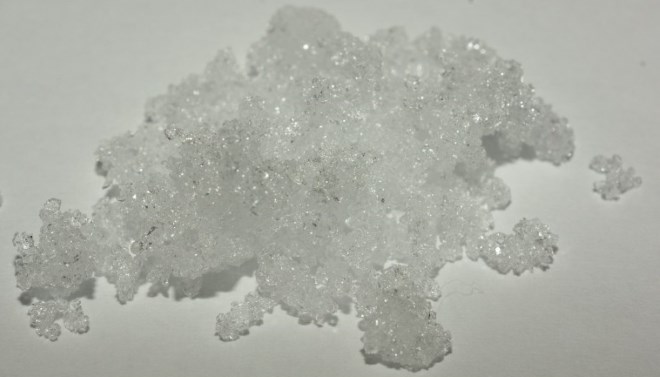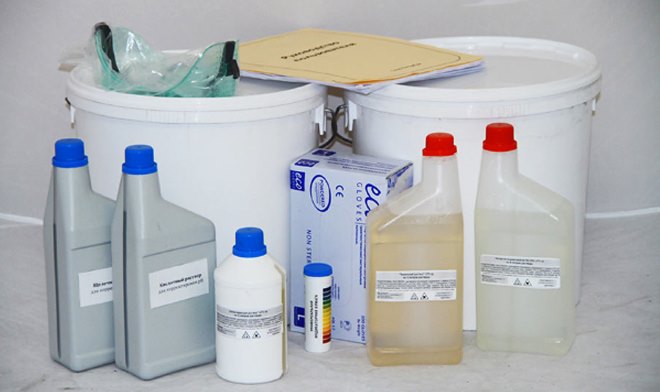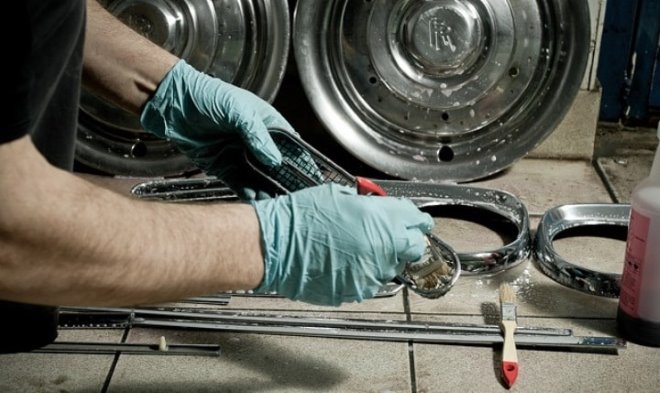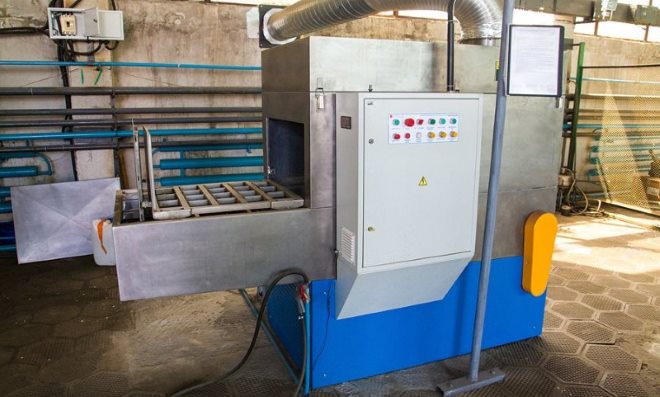To improve the characteristics of products for various purposes, many methods are used, one of which is chemical chromium plating. This technology can significantly improve both the decorative characteristics of the product and its mechanical properties - strength and wear resistance.
The essence of technology
The essence of chromium plating, performed using any technology, is that a layer of chromium is applied to the treated surface, which makes it possible to significantly improve both the decorative and mechanical properties of the part. Chrome plating gives the product the following qualities:
- exceptional decorative characteristics;
- high resistance to corrosion;
- heat resistance;
- wear resistance;
- more technological electromagnetic and mechanical properties.

The most popular methods by which a layer of chromium is applied to the surface to be treated are galvanic and diffusion. Unlike them, chemical chromium plating does not require the use of special equipment and makes it possible to obtain high-quality, uniform and reliable coatings even on products with a complex shape. Chemical plating (in particular, chromium plating) is performed using a special aqueous solution heated to a certain temperature.
The essence of chemical chromium plating is that chromium deposited on the treated surface is restored from a solution of its salts. Such a reduction reaction becomes possible due to the fact that the solution for chemical chromium plating contains sodium hypophosphite. The presence of this particular substance in the solution is the main difference between chemical chromium plating and a similar process performed using an electrolytic solution.

After chemical chromium plating, the finished coating is matte, which is clearly visible even in the video of this process. To give such a coating a characteristic chrome luster, the product must be tucked with subsequent polishing. Meanwhile, the chromium layer obtained using this technology, although not highly decorative, when compared with diffusion and electrolytic coatings, has a higher quality and reliability. In particular, such a coating contains phosphorus, which gives it strength and hardness.
Preparation for the procedure
Due to its simplicity, chemical chromium plating does not require serious financial costs. It is not difficult to perform chrome plating at home using this technology; for this, it is quite enough to carefully study the theoretical material and watch the corresponding video.
However, it should be borne in mind that the chemicals used for chromium plating using this technology emit toxic fumes that are dangerous to human health, so safety regulations should be strictly observed.

Such chrome plating at home should be performed only in non-residential premises in which effective ventilation is organized. In addition, you must use personal safety equipment:
- respiratory protection respirator;
- goggles for the protection of the organs of vision;
- gloves, clothing and footwear that protect the skin;
- oilcloth apron.
Solutions for chromium plating, performed according to chemical technology, as well as for all auxiliary technological operations, are prepared on the basis of distilled water. The reagents used in this case must have the letter “Ch” in their marking, which indicates their chemical purity. The dishes in which working solutions are prepared can only be glass or enameled.

Before starting chemical chromium plating, the surface of the product should be thoroughly cleaned and degreased. The reliability and quality of chrome plating is largely determined by the thoroughness of these procedures. If the surface to be treated is heavily contaminated and has remnants of the old coating or traces of corrosion, then it is treated with a sandblaster or emery cloth, achieving a metallic sheen. A more reliable and high-quality chrome coating can be formed by preliminary grinding and polishing of the product. After performing these technological procedures, the surface to be treated is degreased using an aqueous solution that includes such components as:
- caustic soda - 100–150 g/l;
- sodium carbonate - 40–50 g/l;
- liquid glass - 3-5 g / l.

To perform degreasing, the resulting mixture is heated to 60-100 ° and only after that the workpiece is lowered into it. Depending on the degree of surface contamination, the product is kept in a heated solution from a quarter of an hour to 60 minutes. To improve the adhesion of chromium to the treated surface, it can be additionally decapitated, which is carried out in a solution of hydrochloric and sulfuric acids.
It should be borne in mind that the chrome coating will hold the stronger, the cleaner and smoother the surface on which it is applied.
If it is necessary to perform chemical chromium plating of aluminum, a product made of this metal is also subjected to zincate treatment, after which it is washed. Before chemical chromium plating of steel alloy parts, a layer of copper is preliminarily applied to their surface. For this, an aqueous solution is used, including the following components:
- copper sulfate - 50 g / l;
- concentrated sulfuric acid - 5–8 g / l.
The working temperature of such a solution, in which the product is kept for several seconds (5–10), should be 15–25 °. After soaking in a copper-plating solution, the product is washed with water and dried. If the steel after copper plating is additionally coated with a nickel layer, the thickness of which will be about 1 micrometer, then the chromium plating performed in the future will be of better quality.
Preparation of working solutions
Solutions for chemical chromium plating should be prepared in the following sequence.
- All chemicals used, except sodium hypophosphite, are miscible or soluble in water.
- The resulting solution is heated to operating temperature.
- Sodium hypophosphite is added to the solution heated to the working temperature.
The product to be subjected to chromium plating is suspended in a prepared and heated solution and kept in it for 5–8 hours. The holding time depends on the required thickness of the chromium layer. To remove the remnants of chemical reagents from the surface of the newly applied coating, the treated product is boiled in water for half an hour. A video on this topic allows you to study the procedure of chemical chromium plating in more detail.
Products, on the surface of which a layer of chromium is applied, are subjected to heat treatment, which promotes the occurrence of low-temperature diffusion, and therefore improves the adhesion of the applied layer to the base metal. Heat treatment is carried out at a temperature of 400°. Under such conditions, the product is aged for an hour.

Separate steel products, such as knives, fish hooks, springs, etc., after heat treatment, may lose their hardness, so they are kept at a temperature of 270–300 ° for three hours. Heat treatment after chemical chromium plating, the procedure for which can also be found in the corresponding video, allows you to increase the hardness of the applied coating.
The finished chrome coating after drying the product on which it is applied has a grayish matte coating. To give chrome a characteristic luster, the surface of the part is polished.







